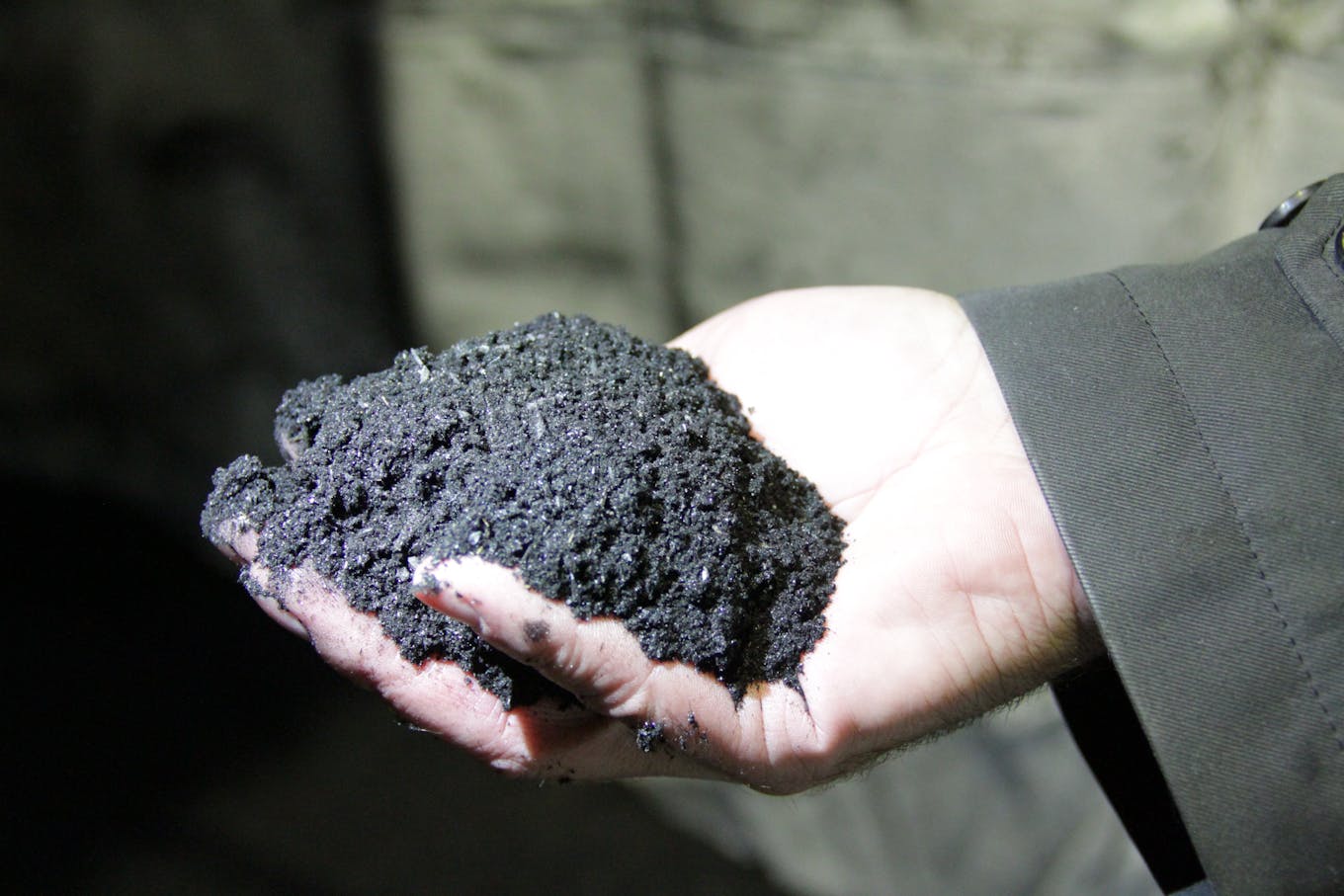Amid the global decarbonisation effort, nature-based climate solutions such as habitat conservation, reforestation, avoided deforestation and improved landscape management have been gaining momentum as credible mitigation options.
To continue reading, subscribe to Eco‑Business.
There's something for everyone. We offer a range of subscription plans.
- Access our stories and receive our Insights Weekly newsletter with the free EB Member plan.
- Unlock unlimited access to our content and archive with EB Circle.
- Publish your content with EB Premium.
The past year saw an explosion in corporate demand for carbon credits generated from nature-based climate solutions. Verra, one of the main standard-setting bodies for voluntary carbon markets, reported that nature-based solutions accounted for more than two-thirds of its total issuances in the first quarter of 2021, compared with just 38 per cent in 2016.
With a surge in companies making net-zero commitments, nature-based carbon credits can help companies offset emissions after they have exhausted all possible ways to first reduce emissions.
But nature-based climate solutions currently face many challenges in credibility, scalability and cost. To tackle these pain points, many innovations have sprouted up, although they are still in the early stages of development.
Candace Vinke, director of nature-based innovations at Verra, explained that incorporating these technologies into existing methodologies of the voluntary carbon market is a complicated process.
“As a standard-setter, before we can introduce new technology innovations within our methodologies, we need to understand the science behind them and the robustness of the approach. What is the uncertainty associated with them? What types of rules do we need to set to make sure there’s standardisation? It’s an exciting time right now, but it’s certainly complex,” said Vinke.
Accounting for two-thirds of all voluntary carbon market transactions, Verra plays an important role in enabling the credibility of carbon credits for nature-based solutions.
“We’re figuring out what the sweet spot is between encouraging innovations, and making sure that they’re based on robust and rigorous science. So we reach out to our working groups on a regular basis to help us assess different requirements within our programmes,” she said.
Here are some key areas of innovation Eco-Business has identified which have the potential to accelerate the adoption of nature-based climate solutions:
Bringing down the cost of carbon accounting
Monitoring, reporting and verification (MRV) of carbon stocks is an expensive process as it requires ground field visits and audits to obtain samples on site and transport them to a lab for analysis. As the process only provides a snapshot of data in time and place, it has to be repeated over time, adding to the cost.
Companies are working to build carbon models that measure carbon stocks from satellite images, otherwise known as “remote-sensing”. To improve the carbon models, innovators are exploring AI and hyperspectral images. Some of the companies in this space include Cloud Agronomics and Farm Trace, which were part of the inaugural cohort of the Sustaintech Xccelerator, as well as NCX, Cultivo, Regrow Ag, and Singapore-based Adatos.

Hone Carbon uses the latest portable sensor technology in combination with an interface to enable in-field measurements of soil carbon. Image: Hone Carbon
Others, like Hone Carbon and Yardstick, are designing handheld devices that enable carbon measurements to be taken directly on-site for cheap, and at much higher resolutions than satellite images. The datasets collected by such devices could be also used by remote sensing developers to “train” their models to be more accurate and flexible to changing geographic conditions.
“We’re actively looking at remote MRV. Everyone working in this space is looking for opportunities to streamline project development through increased adoption of remote practices,” said Vinke.
Ensuring carbon reductions last
As nature-based climate projects involve high up-front costs to implement, many certifying bodies allow project developers to sell a proportion of their credits before they are generated. However, threats such as illegal logging and fires put the delivery of pre-sold credits at risk.

An IoT in-tree sensor, known as a dendrometer to allow for automated data collection. Image: Treevia
Innovators are working to find ways to respond to these risks more effectively. For example, Rainforest Connection uses real-time acoustics software to detect the sounds of chainsaws and trucks to stop illegal deforestation activities as they are happening. Companies like DJI and Dronitec have developed drones that can utilise visible and thermal imagery to detect fires before they can spread and become uncontrollable.
Others, like Treevia, are aiming to streamline forest management using internet-of-things (IoT) in-tree sensors to collect real-time data on the health of the ecosystem.
Locking in more carbon, faster
Researchers are exploring ways to increase the carbon sequestration of soil as around 80 per cent of the carbon stored in terrestrial ecosystems is stored underground. According to the 4 per 1000 initiative, an annual growth rate of 0.4 per cent in soil carbon stocks would significantly reduce the amount of carbon in the atmosphere.
The Carbon Community recently unveiled a landmark study that will assess the combined effects of forest microbiome inoculation and enhanced rock weathering to accelerate forest sequestration in both trees and soil.
Enhanced weathering involves crushing selected rock types to spread over land and ocean habitats. The idea is simple: by increasing the surface area to volume ratio of minerals which sequester atmospheric carbon over thousand years as they are naturally weathered down, their carbon removal potential can be increased in a much faster timescale.
While largely accepted by the scientific community, this method has had limited application at scale. Companies in this space include Heirloom Carbon, which was invested in by Bill Gate’s Breakthrough Energy Ventures, and the Future Forest Company, which has sold credits to the technology company Stripe.

Fresh biochar in hand. Image: Green Energy Futures, CC BY-NC-SA 2.0
Another method to increase carbon sequestration is by using biochar, a stable charcoal produced by burning biomass under high heat and anaerobic conditions. Advocates for the use of biochar claim that it can increase the residence time of organic carbon in soil, and Microsoft counts itself as one of its believers, having contracted 2,000 biochar credits this year alone. Companies in this space include Carbofex Oy, Circular Carbon and Husk Ventures.
Lastly, innovators are exploring regenerative agriculture approaches such as managed grazing, where herds of herbivores like cattle are rotated across grasslands to increase soil organic carbon. Companies experimenting and collecting data on the carbon sequestration impacts of different managed grazing practices include land managers such as Impact Ag and SLM Partners.
Co-benefits and premiums
With scientists warning against a singular focus on climate and carbon alone, many corporate buyers are looking for ways to ensure that the carbon credits they purchase are of high quality and bring about co-benefits such as biodiversity conservation, contribution to the livelihoods of local communities and safeguarding against other impacts of climate change.
Increasingly, carbon certifiers are offering credits that are also verified for their co-benefits, such as Verra’s Climate, Community & Biodiversity (CCB) Standards, and the Australian government’s Carbon + Biodiversity Pilot for projects in their Emissions Reduction Fund (ERF). Projects that are able to achieve these standards can then be sold on the market for a premium.
Innovations to expedite the MRV process and bring down its costs include the use of environmental DNA analysis. Using samples collected from just water or soil samples, for example, companies such as Naturemetrics, Applied Genomics and SpyGen claim they are able to detect thousands of species that would otherwise take weeks or months to document.
Beyond the benefit of verifying carbon credit premiums, such technology and services can also benefit project managers, to help them detect both invasive and vulnerable species in order to inform proper management approaches.
How to achieve scale?
“For any of these technologies to scale, they need to first meet the needs of investors and credit buyers,” said Vinke.
“Broader than that, we need to consult stakeholders to understand the benefits, feasibility, rigour of these innovations and identify the potential use cases. Sometimes we also need to pilot them first to assess the opportunity with potential collaborating partners,” she added.
The last step involves working with experts to implement changes in the various standards’ rules that would enable the use of new technologies.
Rachel Ashton Lim is an impact investment analyst at Silverstrand Capital, a Singapore-based family office which invests in regenerative agriculture and other nature-based solutions.








